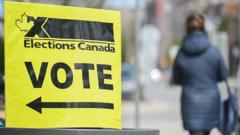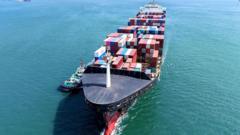The outcome of the upcoming Canadian election heavily hinges on the Greater Toronto Area, where the Conservatives are gaining traction against the long-dominant Liberals, a shift largely influenced by economic challenges and U.S. tariffs.
The Battle for Canada's Greater Toronto Area: A Pivotal Election

The Battle for Canada's Greater Toronto Area: A Pivotal Election
As the federal election approaches, Greater Toronto emerges as a critical battleground, with rising economic pressures reshaping voter preferences.
In the run-up to the federal election scheduled for Monday, the Greater Toronto Area (GTA) is proving to be a decisive factor in determining the future of Canada's political landscape. Historically a stronghold for the Liberal Party, recent events have shaken their dominance, culminating in a significant loss in a special election in downtown Toronto, a seat they held for 28 years. This defeat, analysts suggest, set off a chain reaction, leading to Prime Minister Justin Trudeau's resignation and the current election climate.
As voters in the GTA grapple with rising housing and food costs, the Conservatives—led by Pierre Poilievre—are making unprecedented inroads in this populous region of around 7 million residents. Their ascent is compounded by the economic ramifications of President Trump's tariffs aimed at Canada, which have further unsettled the electorate.
Now, with 343 seats in the House of Commons up for grabs, the 56 within the loosely-defined boundaries of the GTA are not just numbers; they are pivotal positions that may dictate which party will navigate the ongoing trade dispute with the United States. Despite the Conservatives' newfound momentum, the Liberals, under Prime Minister Mark Carney, are attempting to reassure their base and regain trust ahead of the election. The stakes have never been higher as every vote may tip the scale in a contest that could redefine the country's economic future.





















